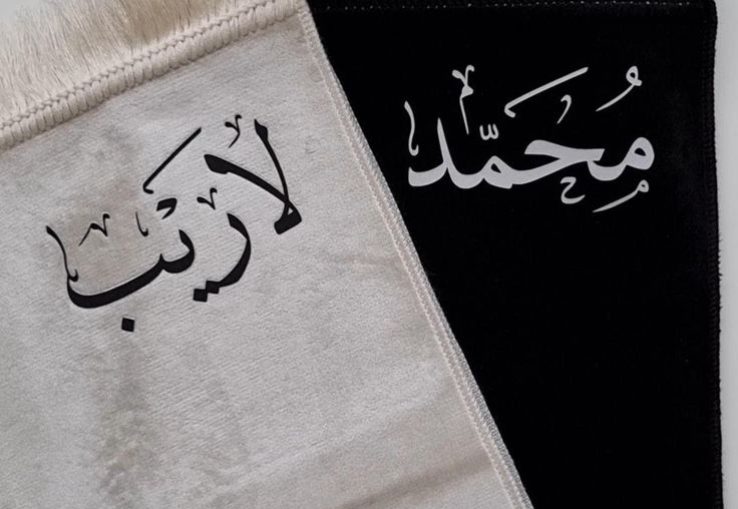
In Islam, prayer mats hold deep significance as they serve as a sacred space for worship and connection with Allah. A common question arises: Can I write names in different languages on a prayer mat in Islam? For some, writing names of loved ones serves as a reminder to include them in their prayers and to seek Allah’s blessings for them. This simple act of remembrance reflects a sense of compassion and unity, highlighting that prayer is not solely individual but can encompass the well-being of others
Scholarly Opinions on Writing Names on Prayer Mats
The permissibility of writing names in different languages on prayer mats is a topic of discussion between different Islamic scholars. Most scholars believe that writing names on a prayer mat in other languages is allowed, the intention of writing is not wrong, it must be pure and the writing does not distract you from the prayer. On the other hand, some Islamic scholars that only Arabic language can be used because it’s the language of the Quran, as well as the language of worship
Names in any language on a prayer mat:
When we consider the idea of writing names in any language other than Arabic, the answer is that there is no specific language restriction in Islam for writing names on a prayer mat. However, there are some important key points to keep in mind while writing a name on a prayer mat
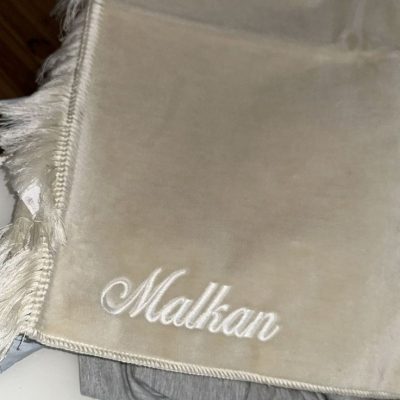
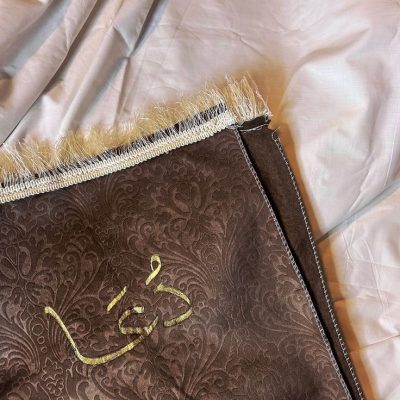
- Some scholars recommend writing names on a prayer mat in Arabic to show respect and maintain the spiritual atmosphere of prayer
- We can also use other languages, but ensuring that the writing is clear, legible, and does not distract from the prayer is important.
- Languages that promote false beliefs or worship other than Allah should be avoided.
When writing a name on a prayer mat in any language, you must keep some important points in mind. Here are some essential guidelines to follow:
Guidelines for writing names on the prayer mat:
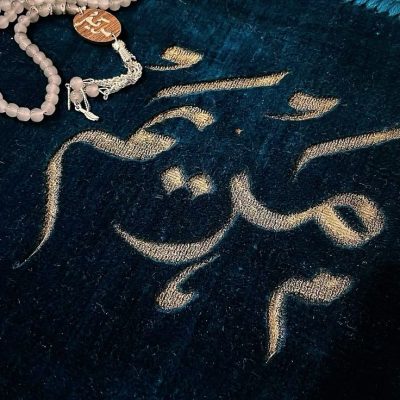
- PLACEMENT: Write the names on a prayer mat at discrete locations, such as the edges or corners, to avoid distraction during prayer.
- SIZE AND FONT: Use a small, clear font that does not overpower the prayer mat’s design or distract from the prayer.
- RESPECT: Avoid writing names in a manner that could be considered disrespectful, such as using bold or large letters.
- INTENTION: Remember that the purpose of writing names is to ask for blessings and remembrance, not to show off or seek attention.
- CONTENT: Only write the names of individuals, not phrases or sentences. Also, avoid overcrowding the mat with names.
Intention and purpose of writing name on prayer mat
Remember that the intention and purpose of writing a name on a prayer mat should be rooted in compassion and a genuine wish to ask for Allah’s blessings. If we separately define these two aspects of writing names in any language on a prayer mat, they would be:
INTENTION
The primary intention of writing names on the prayer mat is to ask for Allah’s blessings, mercy, and protection for the individual. The intention must be pure and sincere, without any desire for personal recognition
PURPOSE
The purpose of writing names on the prayer mat is to remember loved ones and ask for blessings for them in prayer, as well as to seek guidance and protection for the individual’s name.
‘Umar ibn al-Khattab (Allah be pleased with him) narrated that the Prophet (Allah bless him and give him peace) said: “Deeds are judged by intentions, and a person is rewarded according to what they intend. Therefore, whoever emigrates for the sake of Allah and His Messenger, his emigration is for Allah and His Messenger. Whoever emigrates for worldly gain or to marry a woman he desires, then his emigration is for the purpose that moved him to emigrate.” [Bukhari; Muslim]
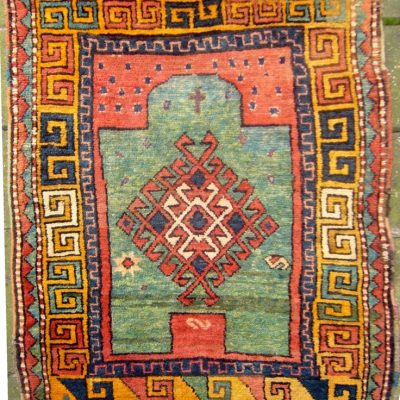
Can a non-muslim be given a prayer mat having a roman god origin name written on it?
Yes, a person can use a non-Muslim gifted prayer mat with their name, even if it has a Roman god origin. However, if the name of the person is printed at the place of Sajdah, this should be avoided. If the name is printed in a corner or a discrete location, then there is no issue with it
Understanding the Use of Names on Prayer Mats
While many people may not choose a name based on its pagan origins, it’s important to recognize that, for most, a name is simply a name. People often don’t associate it with worship or any negative connotations. When using a prayer mat, the key consideration is the intention behind the action.
Actions Are But By Intentions:
The Prophet (PBUH) reminded us that actions are judged by intentions. In the context of using a prayer mat, if the intention behind writing a name is simply to remember someone and ask for blessings, then it is deemed permissible. The placement of the name matters, however; it should not distract from the act of prayer. For example, placing the name in the center of the mat could be distracting, while positioning it in a corner would be less disruptive.
Check out more content like this: More
#PrayerMat #IslamicEtiquette #Blessings #IntentionInPrayer #RespectInPrayer
